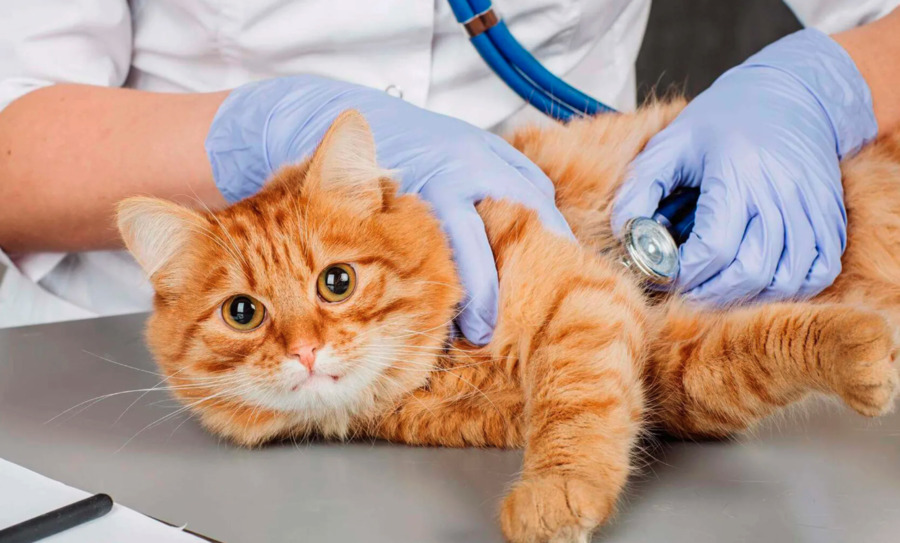Cats are not just pets; they are companions that bring a unique sense of warmth and comfort to any home. Their soft, warm fur and the soothing act of petting them can significantly reduce human stress and anxiety. This mutual relationship benefits both cats and their owners, creating a harmonious living environment. However, while cats can have a positive impact on our health, it is crucial for cat owners to ensure that their feline friends are also cared for, particularly when it comes to their health. Diseases like dermatitis can affect cats significantly, requiring owners to be vigilant and proactive in seeking treatment.
What is Dermatitis in Cats?
Dermatitis is a common inflammatory skin condition in cats that causes irritation, itching, and discomfort. It can arise from various sources, including allergies, infections, and physical irritants. The condition affects the cat’s skin’s health, leading to symptoms that can diminish the quality of life if not properly managed. Understanding dermatitis is crucial for cat owners to ensure timely and effective treatment and to prevent the condition from escalating into more severe health issues.

Diagnostic Approaches for Dermatitis in Cats
Effective diagnosis of dermatitis in cats involves a combination of visual inspection and detailed medical testing:
– Initial Consultation and Visual Examination: A vet will begin with a thorough examination of the cat’s skin and fur, noting any signs of irritation, rashes, or abnormality. They will also discuss the cat’s dietary habits and environment to identify potential triggers.
-Comprehensive Testing: Key diagnostic tests include:
– Bacteriopsy and Skin Scrapings: These tests help identify bacterial infections or parasites like mites.
– Trichoscopy: This test is used to examine the health of the fur and scalp, looking for signs of fungal infections such as ringworm.
– Urine and Blood Tests: These are crucial for uncovering underlying health issues that may contribute to skin conditions, such as allergies or hormonal imbalances.
– Antibiotic Sensitivity Tests: If bacteria are present, these tests determine which antibiotics are most effective in treating the infection.
Recognizing Symptoms of Dermatitis in Cats
Cats suffering from dermatitis exhibit various symptoms that can signal the need for veterinary attention:
Visible Skin Changes: Redness, flaking, and the appearance of pimples or scales.
Coat Deterioration: Cats may develop dandruff or have patches of greasy, dirty fur, particularly along the back.
Discomfort and Itching: Severe itching is common, which may lead to more intense scratching and potentially secondary infections.
Behavioral Changes: Increased lethargy or irritation due to discomfort.
As the disease progresses, symptoms like swelling, hair loss, and even ulcerations can occur.
Causes of Dermatitis in Cats
Dermatitis in cats can be triggered by a variety of factors:
– Environmental Allergens: Such as pollen, mold, or dust.
– Food Allergies: Reactions to certain ingredients in their diet.
– Flea or Parasite Infestations: Ticks and fleas can cause severe skin irritation.
– Chemical Irritants: Exposure to harsh grooming products or household cleaners.
– Physical Trauma: Including scratches or wounds that become inflamed.
– Extreme Temperatures: Burns or frostbite can also lead to dermatitis.
Types and Specifics of Dermatitis in Cats
Dermatitis is categorized based on its underlying causes:
– Parasitic Dermatitis: Caused by parasites such as fleas or mites.
– Contact Dermatitis: Resulting from direct contact with irritants.
– Bacterial Dermatitis: Involving bacterial overgrowth that requires targeted antibiotic treatment.
– Traumatic Dermatitis: Often due to excessive grooming or scratching.
– Allergic or Atopic Dermatitis: Triggered by environmental or dietary allergens.
– Preparative Dermatitis: From reactions to medications or topical treatments.
Potential Complications of Dermatitis
If untreated, dermatitis can lead to severe complications in cats:
Skin and Tissue Damage: Such as swelling, ulcers, and hair loss.
Chronic Health Issues: Dermatitis can become persistent, weakening the immune system and making the cat susceptible to other infections.
Quincke’s Edema: A rapid, severe swelling under the skin, potentially life-threatening if not treated promptly.

Treatment and Management Strategies for Dermatitis
Management of dermatitis in cats may include:
Pharmacological Treatments: Utilizing a range of drugs like antibiotics, antihistamines, and anti-inflammatory medications.
Allergen-Specific Immunotherapy: Also known as allergy shots, these help reduce sensitivity to specific allergens.
Dietary Adjustments: Switching to hypoallergenic foods to eliminate dietary triggers.
Preventive Measures for Dermatitis in Cats
Preventing dermatitis involves regular care and monitoring:
– Regular Veterinary Visits: These are for early detection and management of skin issues.
– Proper Grooming: Keeping the cat’s coat clean and well-maintained, especially during shedding periods.
– Flea and Parasite Control: Routine treatments to prevent infestations.
– Stress Reduction and Play: Keeping the cat active and engaged to prevent stress-related health issues.
Vets in the City: Premier Pet Clinic in Dubai
For those looking for the best pet clinic Dubai, Vets in the City offers comprehensive services, including advanced diagnosis and treatment of dermatitis and other feline diseases. Equipped with the latest technology and staffed by experienced professionals, the clinic ensures that all pets receive the highest level of dermatological care.
Thus, understanding what dermatitis in cats is is extremely important for any pet owner. With the right knowledge and resources, like those provided by Vets in the City Clinic in Dubai, owners can ensure that their cats receive the best possible care, keeping them healthy and comfortable.

I am an Administrative Assistant with eight years of experience working alongside the executive team of a Fortune 500 company.
